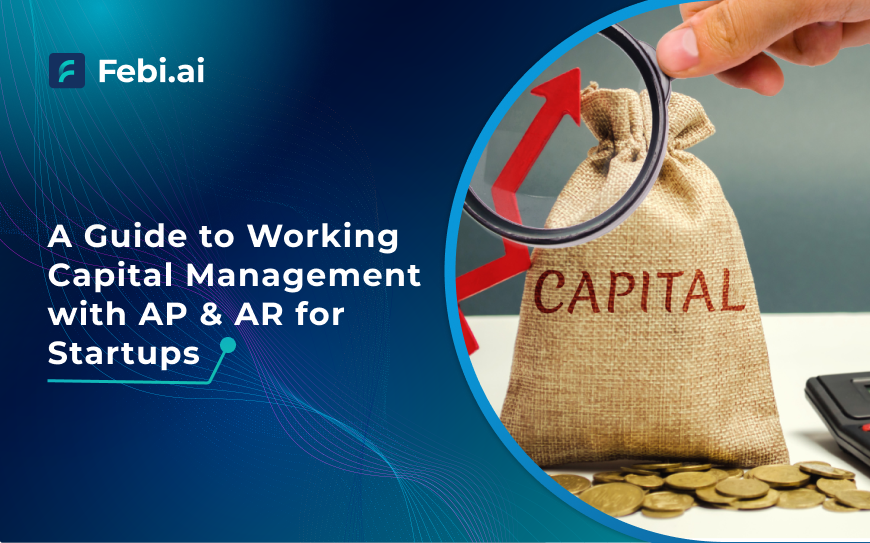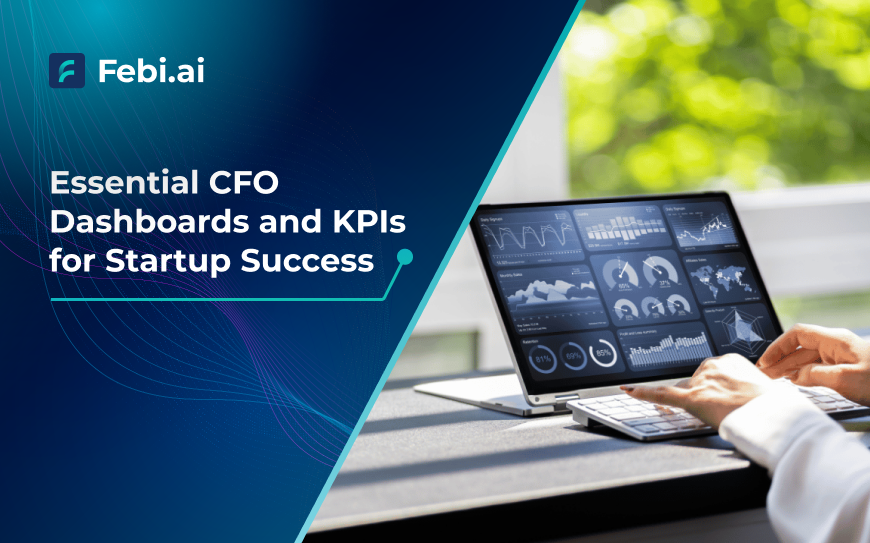Your Accounts Payable (AP) department is not just a back-office function. Instead, it is the core pillar of your company’s financial health. When the accounts payables run like a well-oiled machine, your cash flow improves, vendor relationships thrive, and your business stays agile in a competitive area. But how do you ensure your AP process is up to the mark?
By tracking the right KPIs.
In this blog, we’ll walk you through the top 10 Accounts Payable KPIs that every company should measure. These aren’t just numbers—they’re insights that help you spot inefficiencies, strengthen processes, and steer your company toward financial stability and operational excellence. Ready to learn the top 10 AP KPIs you need to measure for your business? Let’s get started.
Table of Contents
What is an Account Payable KPI?
Accounts Payable, also known as invoice payables are like having a personalised set of guiding financial metrics that show exactly how well your company’s accounts payable (AP) process is running—that’s what an AP KPI offers. These data points provide a clear picture of business efficiency, accuracy, and areas needing improvement.
From tracking how quickly invoices are processed to monitoring payment accuracy, AP KPIs empower businesses to ensure vendors are paid on time, relationships remain strong, and cash flow stays healthy. More than numbers—they’re tools for smarter decisions and smoother operations.
What is the Need for Account Payable KPIs
KPIs for accounts payable are like a performance dashboard for all your financial operations. They help you reveal and identify inefficiencies, like delayed payments or high invoice error rates, and help you fix them before they escalate. For example, monitoring your “days payable outstanding” can help balance cash flow without straining vendor relationships.
On similar lines, tracking “cost per invoice” ensures resources are used effectively. By leveraging these insights, businesses can cut costs, avoid late fees, and even seize early payment discounts—turning everyday processes into strategic advantages. These KPIs are about transforming your AP department into a powerhouse of business efficiency and trust.
Top 10 Account Payable KPIs Every Company Must Measure
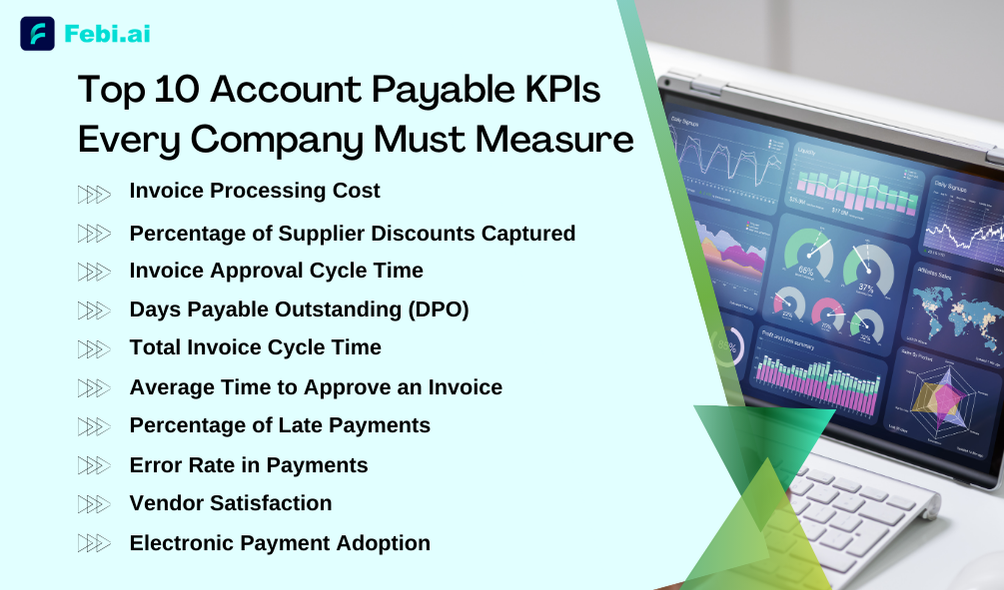
1. Invoice Processing Cost
This is one of the most important KPIs for Accounts Payable as it tells how much it costs to process a single invoice, calculated by dividing total AP expenses by the number of invoices processed. More than being a financial metric, it highlights the inefficiencies in your company workflow. High costs often relate to manual data entry, approval delays, or outdated systems.
By automating most processes and standardizing workflows, organizations can significantly cut costs while improving speed and accuracy. For instance, shifting from manual entry to AI-based invoice capture saves money and reduces errors and processing times.
2. Percentage of Supplier Discounts Captured
This KPI shares how effectively the business capitalizes on early payment discounts. For calculating this metric, simply divide the discounts you have captured by the total discounts present. It gives a clear view of how well your business is managing to save on its costs while keeping cash flow healthy.
Missing out on these discounts often points to delays in invoice approvals or challenges with cash flow planning, which could signal inefficiencies that need addressing. If you wish to capture higher discounts, focus on streamlining invoice processing and prioritize payments that qualify for discounts, aligning the efforts with cash flow forecasts.

3. Invoice Approval Cycle Time
This KPI looks at how long it takes to approve an invoice, starting from when it’s received. If the process takes too long, it can cause missed opportunities like early payment discounts and might strain vendor relationships. The approval workflow often reveals where things slow down—whether it’s unclear responsibilities or outdated manual steps.
By setting up clear approval rules, automating the process, and using tools to track progress in real time, businesses can speed things up. This doesn’t just make operations smoother; it also helps build trust with vendors and frees up teams to focus on more strategic tasks.
4. Days Payable Outstanding (DPO)
DPO reflects how long a company takes to pay its suppliers, calculated as (Average Accounts Payable ÷ Cost of Goods Sold) × Number of Days. It’s a balancing act.
While a higher DPO number conserves cash for other uses, overly long payment terms may lead to weakened supplier relationships. If you want to optimize DPO—regularly review the payment terms, align them with business cycles, and ensure timely invoice processing. The goal is to strike a balance that supports both operational needs and supplier goodwill.
These KPIs are more than numbers—they’re tools to streamline processes, improve relationships, and enhance financial health.
Formula-

5. Total Invoice Cycle Time
This KPI for accounts payables tracks how long it takes for an invoice to go from being received to paid. It’s like a stopwatch for your accounts payable (AP) process. A shorter cycle time means your workflow is efficient, reducing risks of late payments and improving cash flow. If the cycle time is long, it could indicate delays in approvals or manual processing.
Capabilities such as automating the invoice capture, streamlining approval workflows, and setting clear payment priorities can make a big difference, helping your team focus on strategic tasks instead of chasing paper trails.
6. Average Time to Approve an Invoice
This metric indicates the time it takes to approve an invoice for payment, and is calculated by dividing total approval time by the number of invoices. A faster approval process not only avoids the late fees but also strengthens vendor relationships and opens opportunities for early payment discounts.
Long approval times often result from unclear hierarchies or manual workflows. There are online digital tools like automated approval routing that simplify and quicken the pace of processes while improving accuracy and transparency.
7. Percentage of Late Payments
This one is another important KPI as it tells the frequency of payments being made past their due date. We all know that frequent late payments can harm vendor relationships, lead to penalties, and even affect your reputation. Causes often include poor performance tracking or overwhelmed AP teams. Using automated payment reminders, prioritizing invoices when they are near deadlines, and digital invoice tracking systems can help reduce late payments.
Think of it as moving from reactive to proactive payments, keeping vendors happy and saving costs.
Formula-
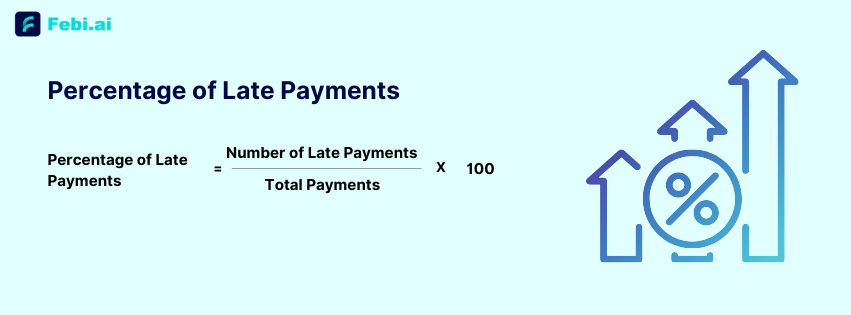
8. Error Rate in Payments
Payment errors—such as sending the incorrect amount or paying the wrong vendor are quite common in the real-world scenario. But these can mismanage your daily operations and negatively affect vendor relationships. If you see a high error rate, it’s a major red flag that needs prompt attention.
In most cases, manual handling or weak quality controls are the issue. We’d recommend automating the bookkeeping process, introducing real-time validation checks, and training staff on standard processes as ways to minimize mistakes. Lower error rates mean fewer disruptions and stronger trust with vendors.
Formula-

9. Vendor Satisfaction
Are payments timely? Is communication clear? This KPI is about how vendors perceive your payment process.
Vendors value reliability, and high satisfaction can lead to better terms, faster service, or even priority treatment. Regular surveys, timely payments, and clear communication are key to keeping vendors happy. Think of it as more than a number—vendor satisfaction is about building long-term partnerships that benefit both sides.
10. Electronic Payment Adoption
This metric tracks how many payments are made electronically. A higher adoption rate means faster, more secure transactions and reduced processing costs. Resistance to change—either internal or from vendors—can slow adoption. Highlight the benefits, such as faster payment processing and better security, and make the transition seamless by providing easy-to-use systems and support. This KPI is a marker of modernization, showing your AP department is forward-thinking and efficient.
Formula-
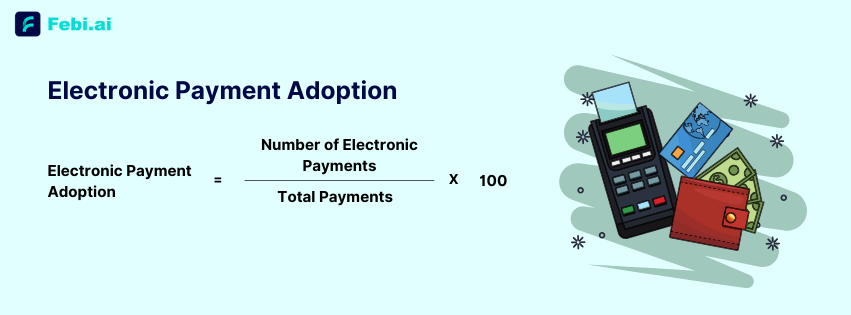
How Febi.ai Enables Automated Accounts Payable Excellence
1. Process Invoices in Real Time Using Generative AI
Febi.ai harnesses the power of generative Artificial Intelligence models to process your business invoices in real-time. This advanced technology ensures that invoices are captured, interpreted and processed faster, reducing delays and minimizing human errors.
2. Automated Approval Workflow
With Febi.ai’s automated approval workflow mechanism, you can even route the invoices to appropriate personnel for validation and approval without manual intervention. This feature accelerates the approval process, ensuring timely payments and improving vendor relationships.
3. Three-Way Matching: PO, GRN, Invoice
Febi.ai implements a robust three-way matching system that compares purchase orders (PO), goods receipt notes (GRN) and invoices. This ensures that all your data is aligned, significantly reducing the probability of discrepancies and enhancing the accuracy of your Accounts Payables process.
4. Real-Time Analytics and Customised Reports
Get detailed insights into your payables performance with Febi.ai’s live analytics and custom reports and statements. These tools provide comprehensive visibility into your AP financial metrics, so you can track KPIs, identify trends, and make decisions with confidence. Altogether rooting for better financial management.
5. Real-Time Validation Checks
In the invoice processing phase, Febi platform performs real-time validation checks. What this means is that all data is accurate and compliant with your company’s policies and regulatory requirements, lowering the risk of discrepancies and fraudulent activities.
6. Accessible Vendor Portal
Febi.ai offers an accessible vendor portal so suppliers can submit invoices, track payment status, and communicate directly with your AP team. This transparency supports stronger vendor relationships and improves internal collaboration.
7. Smart Document Management
Managing a high volume of files and documents becomes effortless with Febi.ai’s smart document management system. It organizes, stores, and retrieves documents efficiently, ensuring that all necessary information is readily available when needed. Moreover, every file and transaction has a trace in your system that can be shared, viewed and downloaded in a few clicks.
8. Seamless Integration with Multiple ERPs
Febi seamlessly integrates with many Enterprise Resource Planning (ERP) systems, ensuring a smooth flow of data across your organization. This integration eliminates the need for manual data entry and reduces the risk of errors, enhancing overall business efficiency.
With the help of Febi.ai’s advanced AP automation solutions, you can transform your accounts payable processes, ensuring they are efficient, accurate, and compliant. Embrace the future of AP with Febi.ai and experience a significant boost in productivity and financial control.
Conclusion
Measuring the discussed top 10 account payable KPIs can significantly enhance a company’s AP department’s performance and, in turn, your company’s financial health. By focusing on these key financial metrics, a company can streamline your processes, reduce costs, and build stronger relationships with your vendors. Start implementing these KPIs today to drive business efficiency and success in your Accounts Payable operations.
Need to automate your Account Payable, ensure timely payments and improve supplier vendor relationships? Explore Febi ai, a one stop solution for all your accounting problems!

